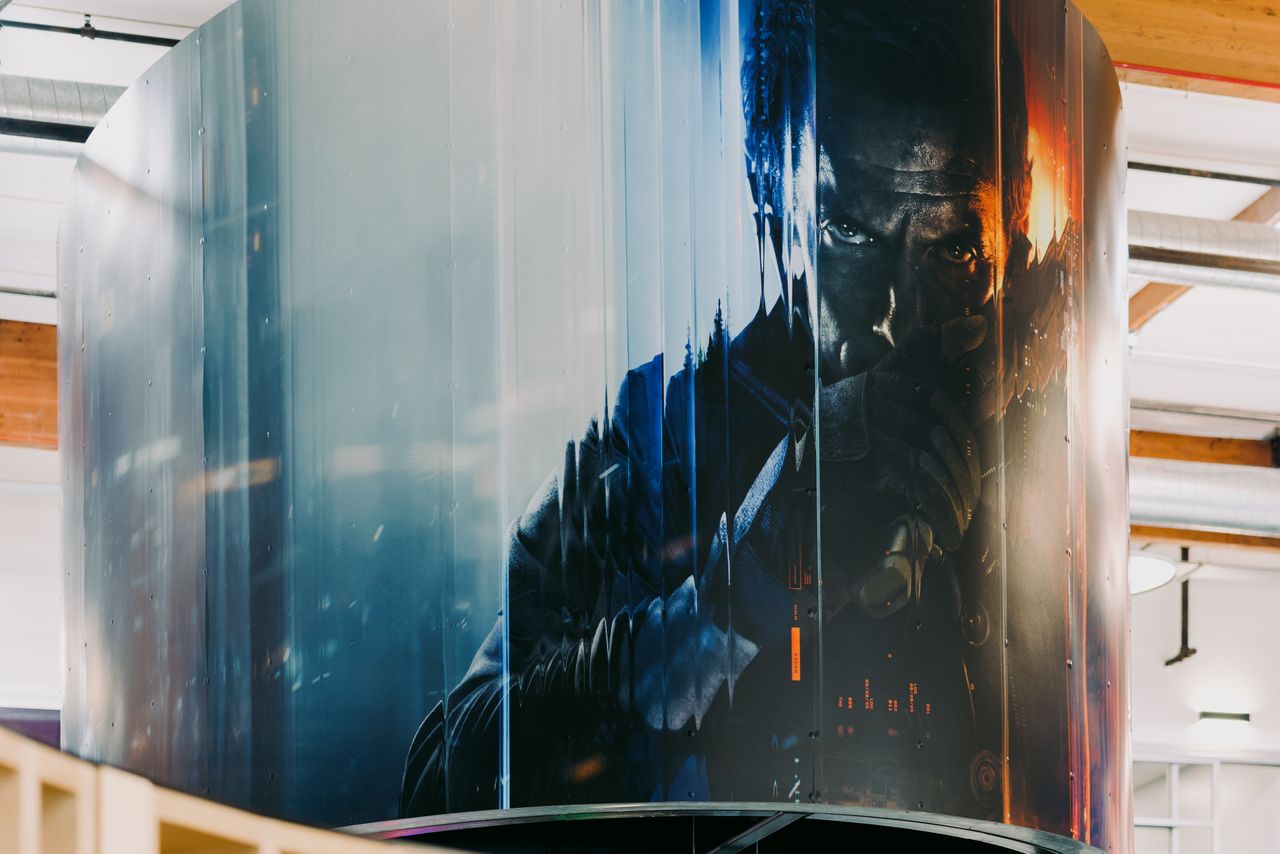
Recently, I disembarked from a shuttle bus and walked into Treyarch Studios, accompanied by a group of other game journalists. It wasn’t my first visit to this office; I had been there the previous year for an interview with Yale Miller and Matt Scronce, which took place before the announcement of Black Ops 6.
A lot had changed since my previous visit, however.

In the lobby, there were some fresh trophies displayed in the cases, along with a fluffy Mister Peakes – the somewhat eerie plush bunny representing the Zombies mode of Black Ops 6 – now positioned alongside replicas of the wonder weapons and mystery boxes. A sneak peek at the teaser trailer for Black Ops 7 was currently showing on the TV screens mounted on the walls.
The entrance leads to a space known as The Pit, which has undergone fresh renovations since my previous visit. In Treyarch, Abby, the beloved zombie titan that captivated crowds at COD NEXT in 2024, now calls home permanently. Murals showcasing David “Section” Mason and Emma Kagan adorn the walls above the cubicles of testing areas.

Moving forward, I find myself traversing towards the dimly lit theater, bathed in blue strip lighting. A series of screens illuminate the room, displaying the cover art for Black Ops 7, where David Mason appears engulfed in shades of blue and orange. We settle into the theater seats as team members from Treyarch and Raven Software take turns briefing us, their enthusiasm radiating as they share insights about their recent projects.
Seven pillars of Call of Duty: Black Ops 7
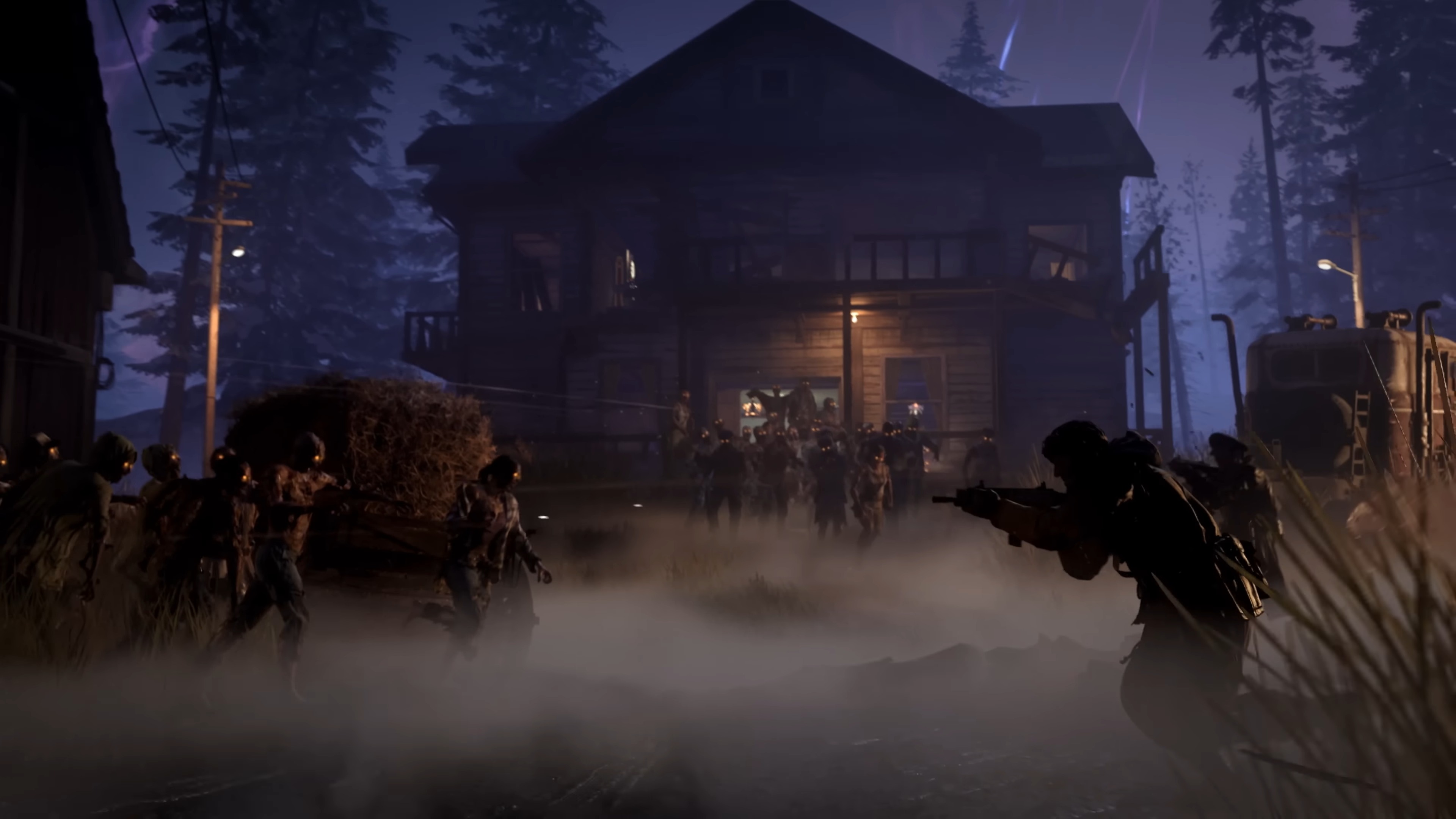
Understanding the content roadmap for Call of Duty 2025 isn’t a simple task, as it has been referred to as the “seven pillars” of Black Ops 7. This game is a colossal offering, jam-packed with content. The development team is beginning with a new cooperative campaign, which enables up to four players to share the chaos of Black Ops 7 as a united squad. It’s been quite some time since a cooperative campaign has been included in any Call of Duty game, with the last one appearing in Black Ops 3 back in 2015.
Transitioning from the campaign, they advance to the latest Endgame feature – an expansive cooperative setting that accommodates up to 32 players, grouped into eight teams of four. For a short period, these teams can glide in using wingsuits and traverse Avalon, uniting efforts against shared adversaries.
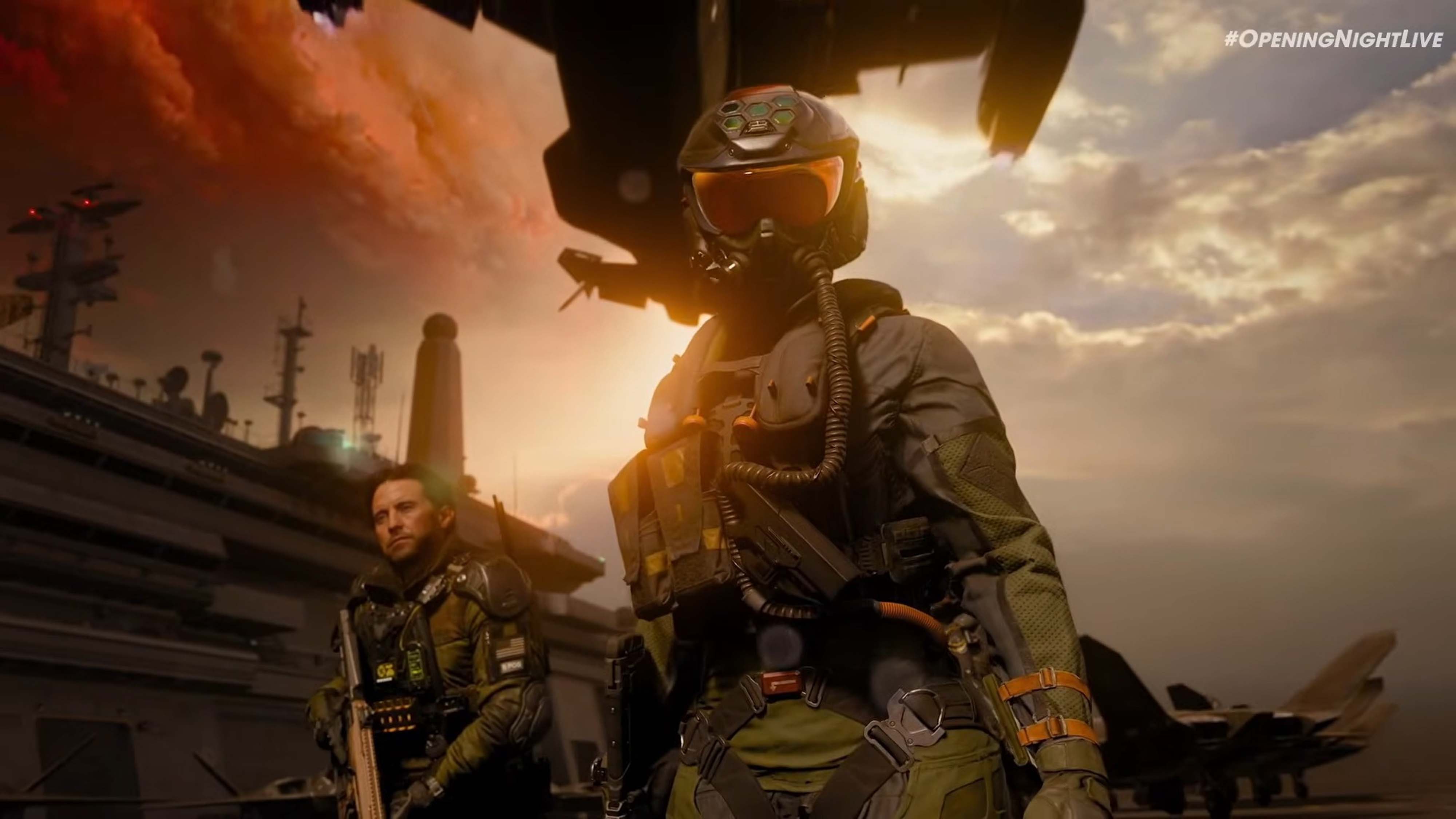
In the upcoming Zombies adaptation, all actions take place within the expansive Dark Aether landscape, modeled after the TranZit map from Black Ops 2. As the screen unfolds, an enormous and mysteriously marked map appears before us. Due to its immense size, players will find it necessary to construct a fifth team member, a special vehicle known as the Wonder Vehicle, for traversing the vast terrain effectively.
As a fan who enjoys the compact maps in Black Ops 6’s Liberty Falls for zombie gaming, I initially had reservations. However, my concerns were swiftly alleviated once the team began discussing Zombies’ Survival mode. In this mode, the larger map arenas are broken down into manageable, bite-sized experiences.
Dead Ops Arcade makes its return in Black Ops 7, providing an additional platform for team play. This top-down, twin-stick zombie shooter is nestled within a game inside another game and can accommodate up to four players as they navigate through various levels of the undead. A few sneak peeks have been released, featuring a squad on a map that looks strangely familiar – Nuketown receives an arcade makeover for the first time in Dead Ops Arcade 4.

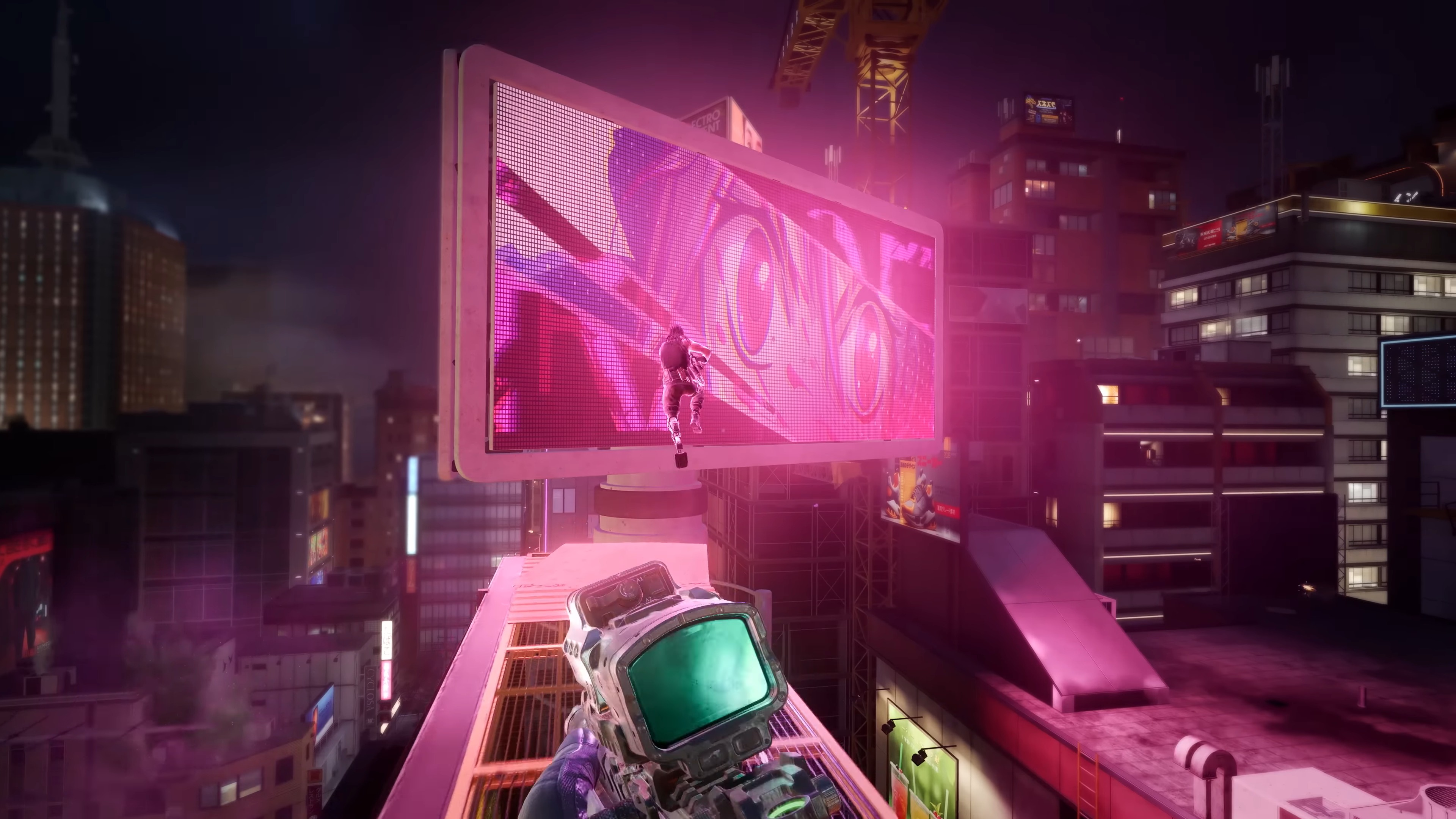
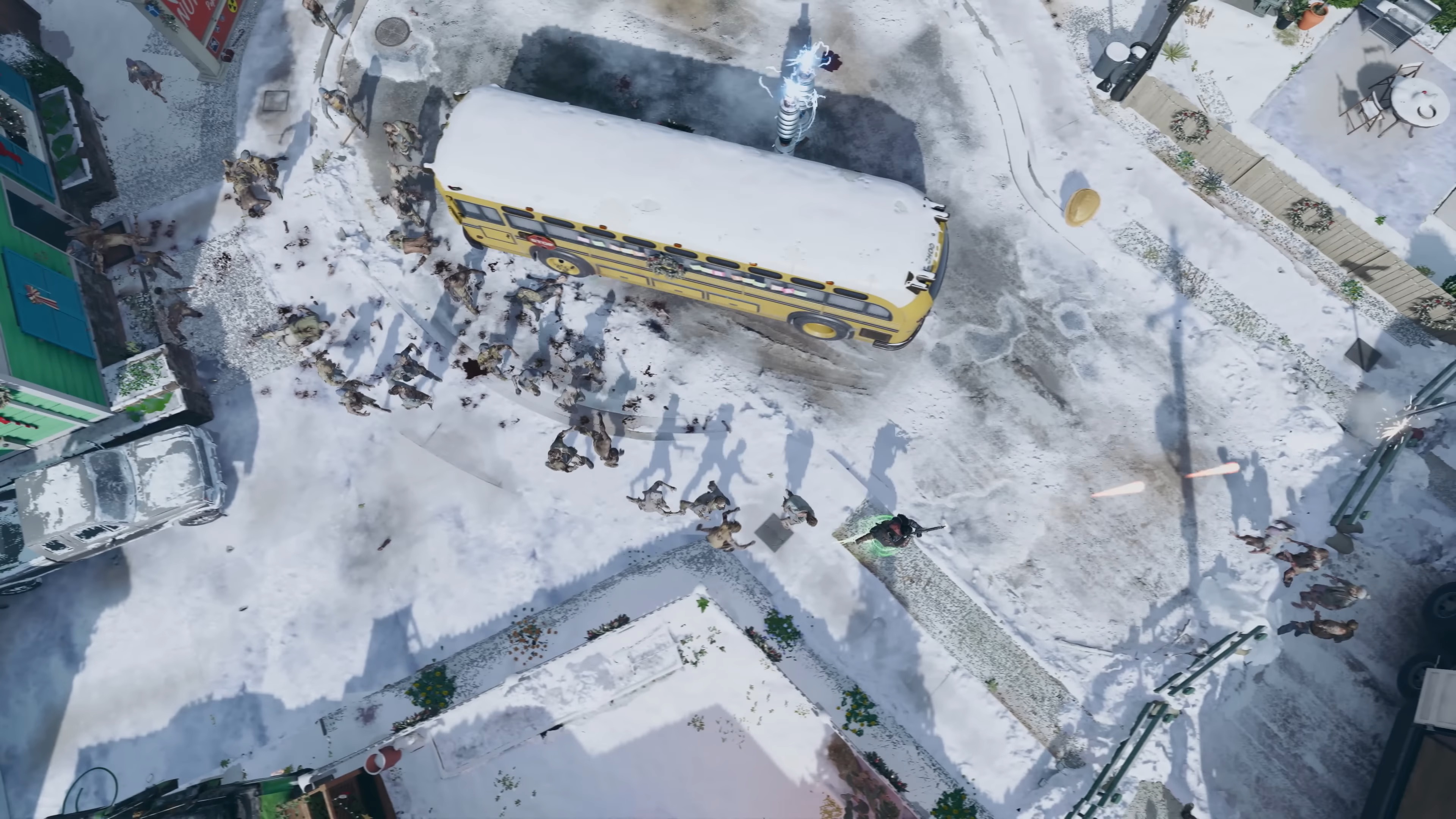
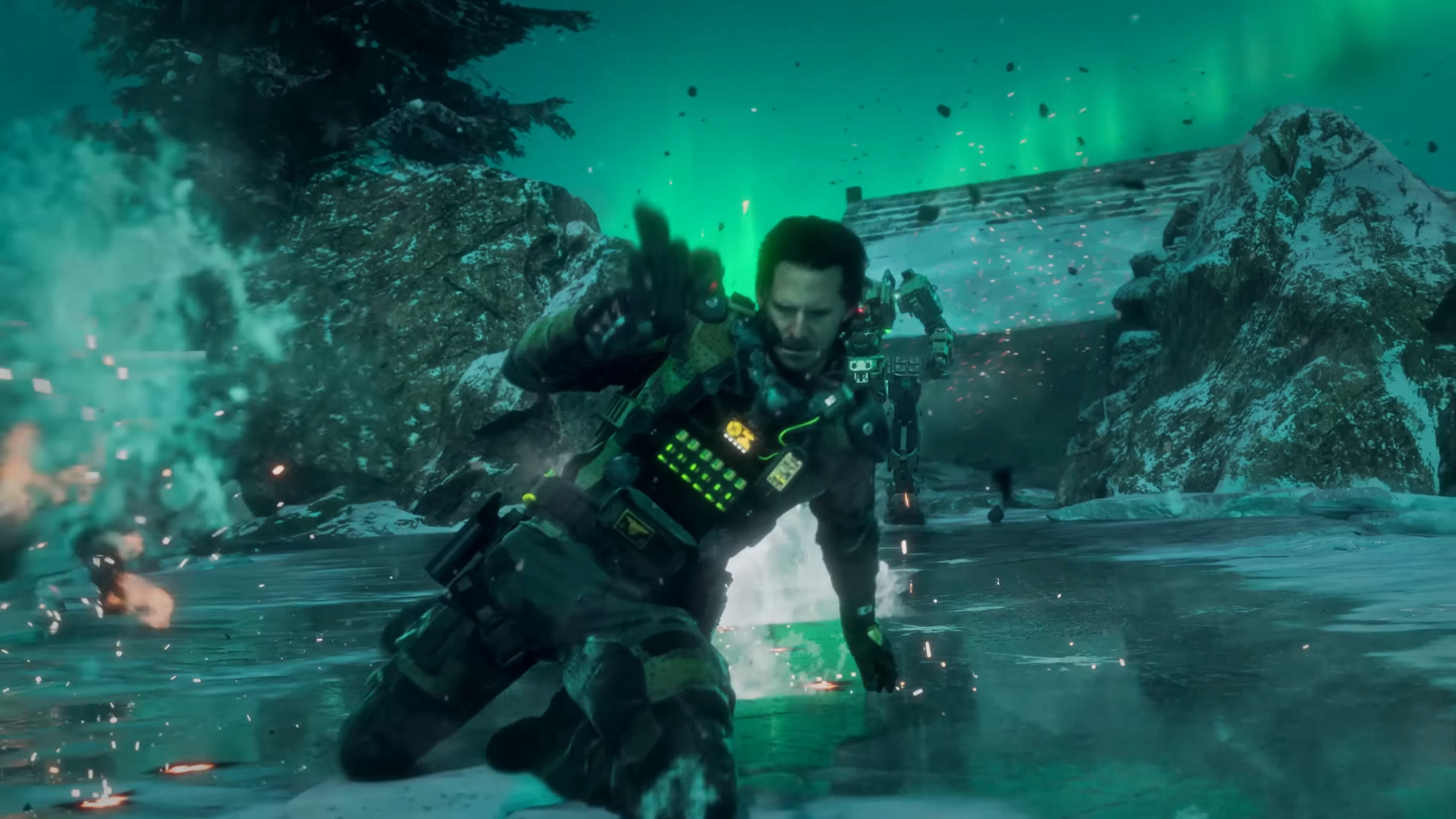
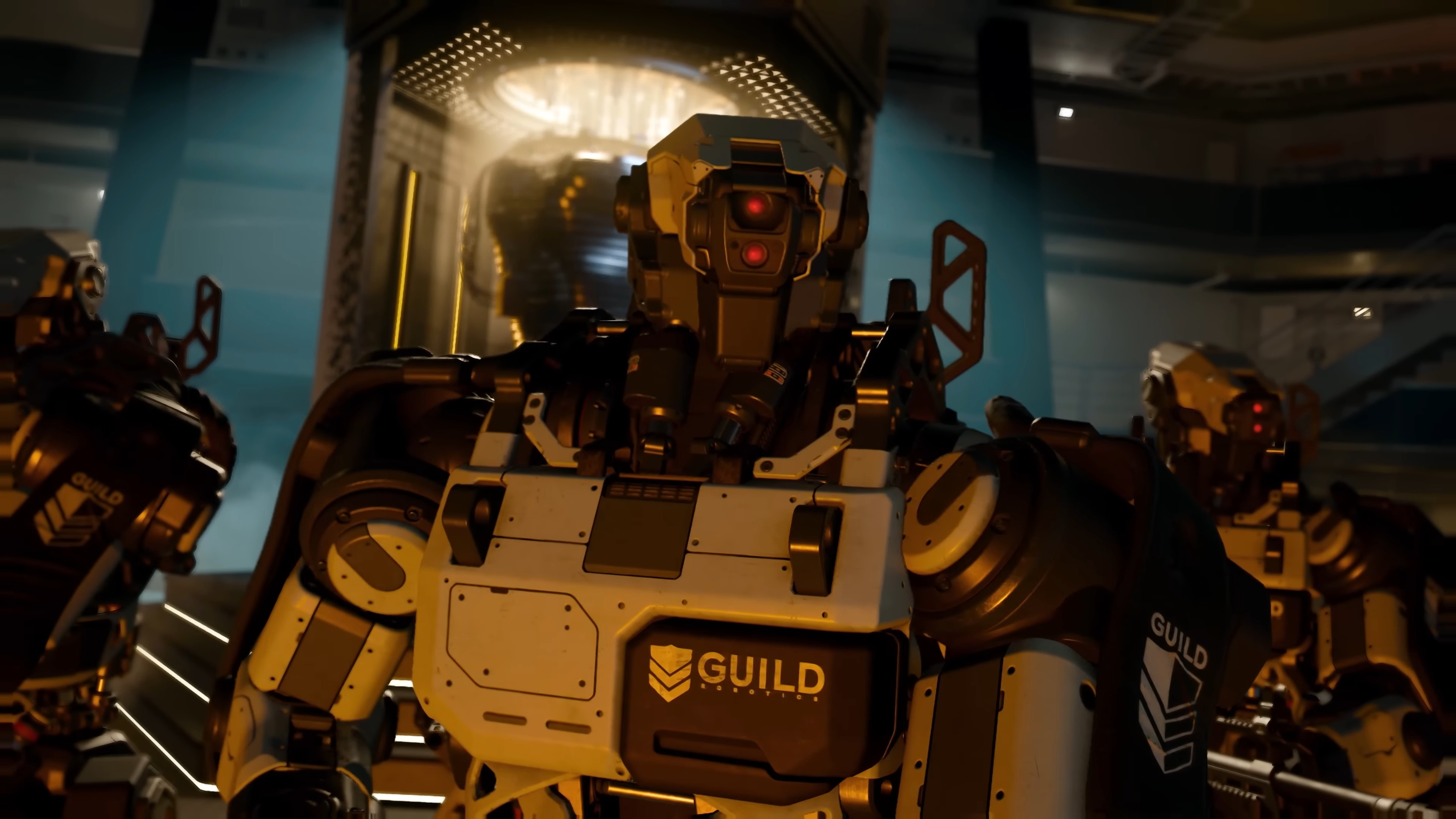
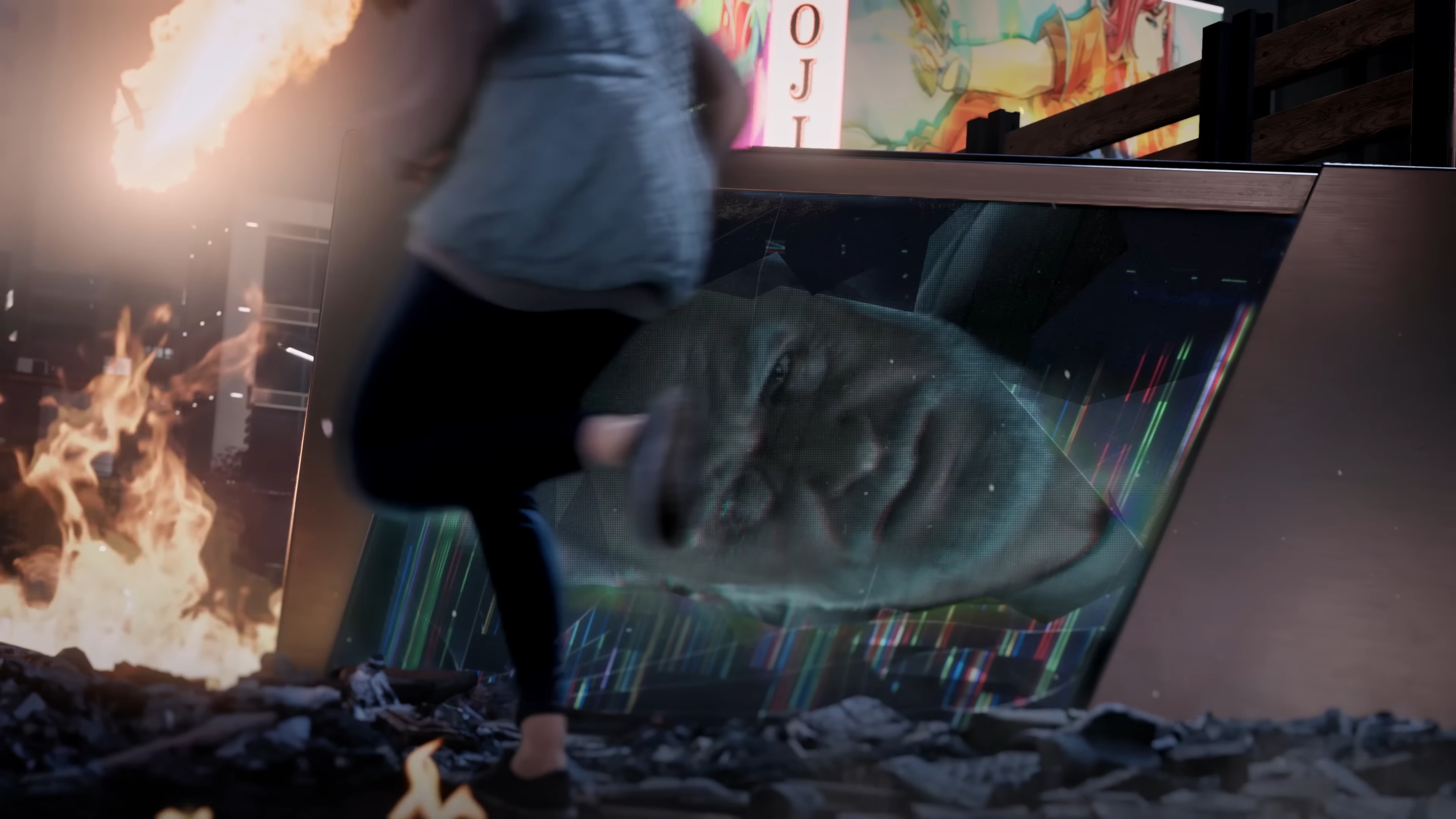
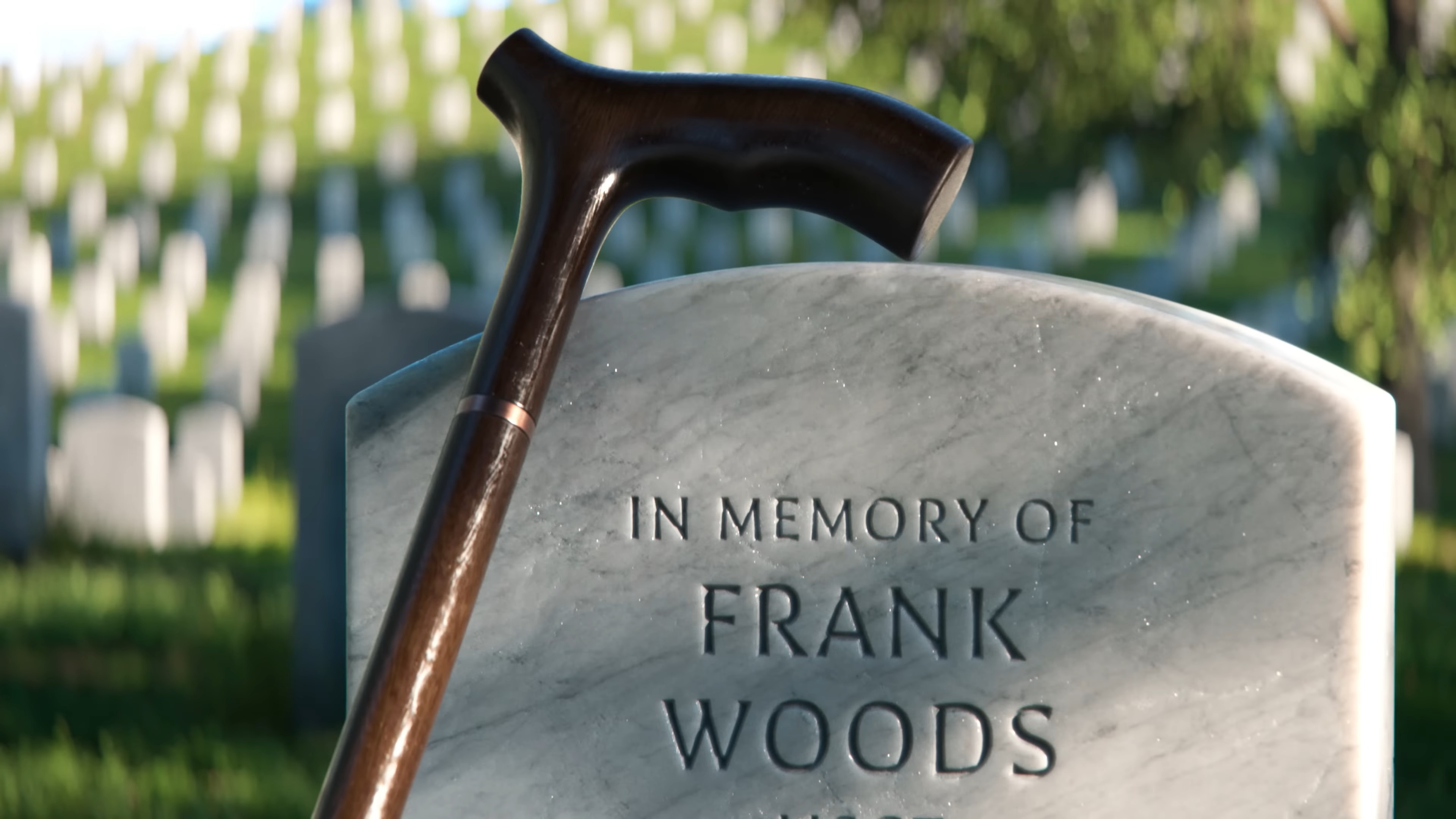

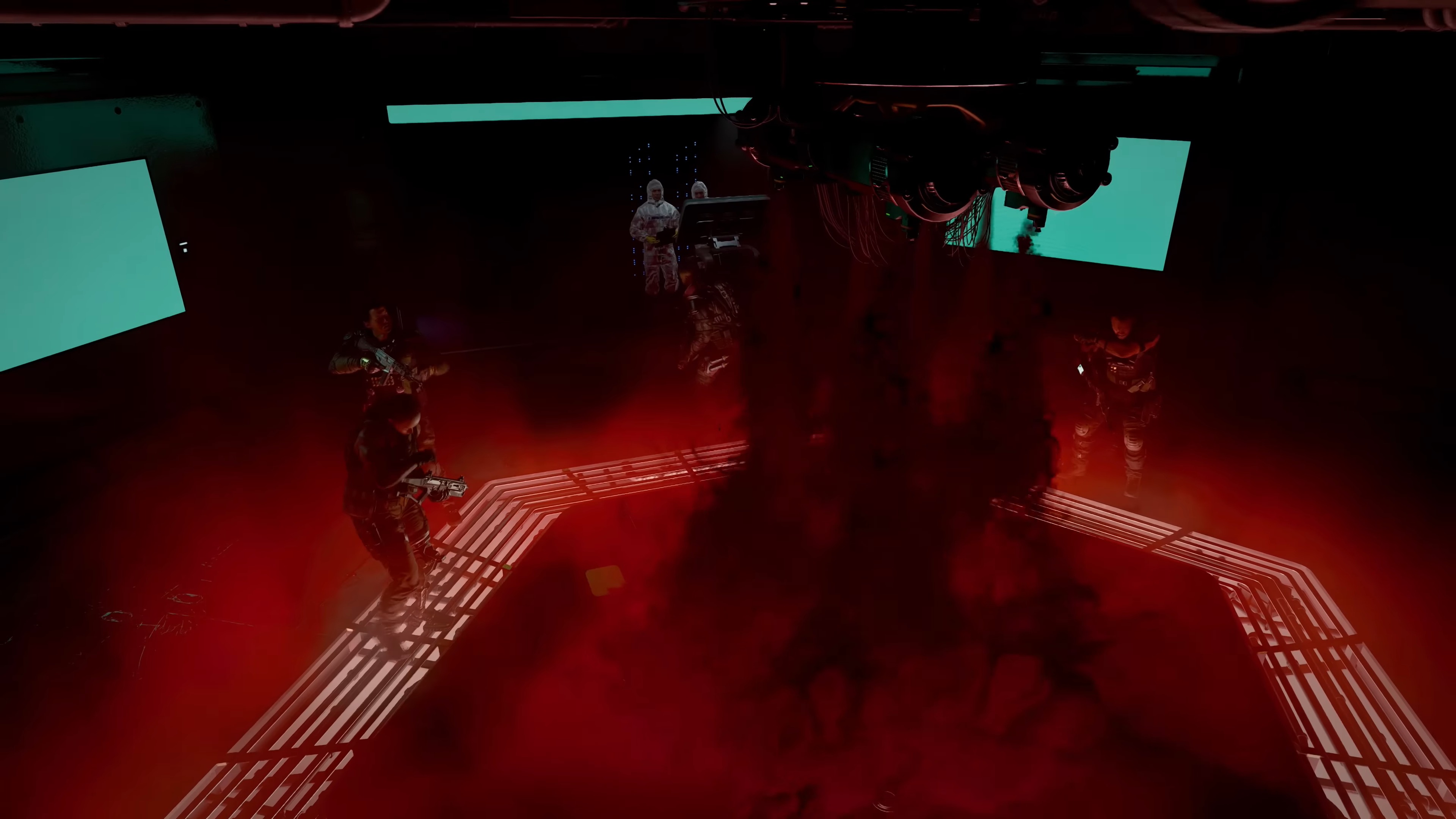
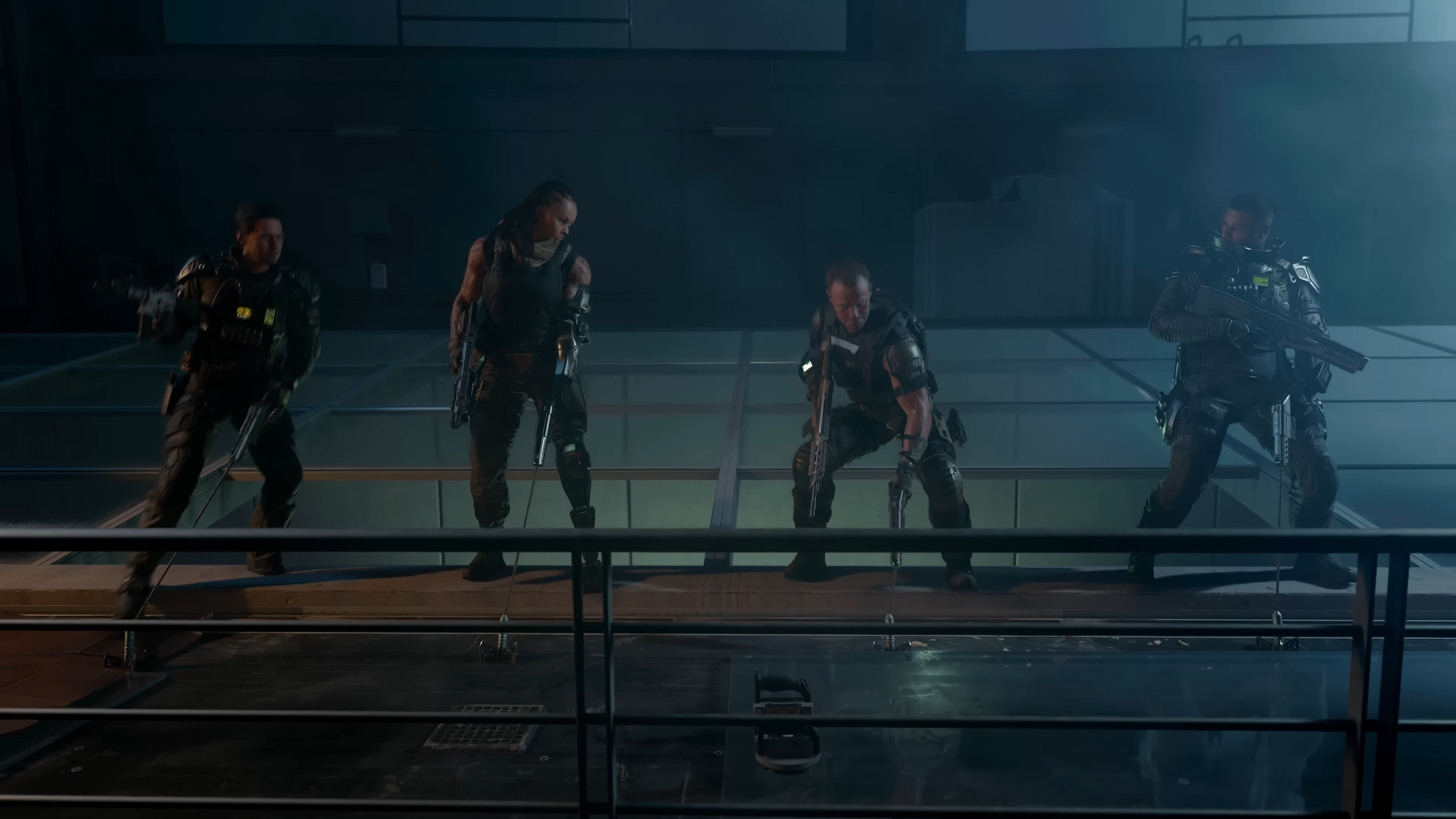
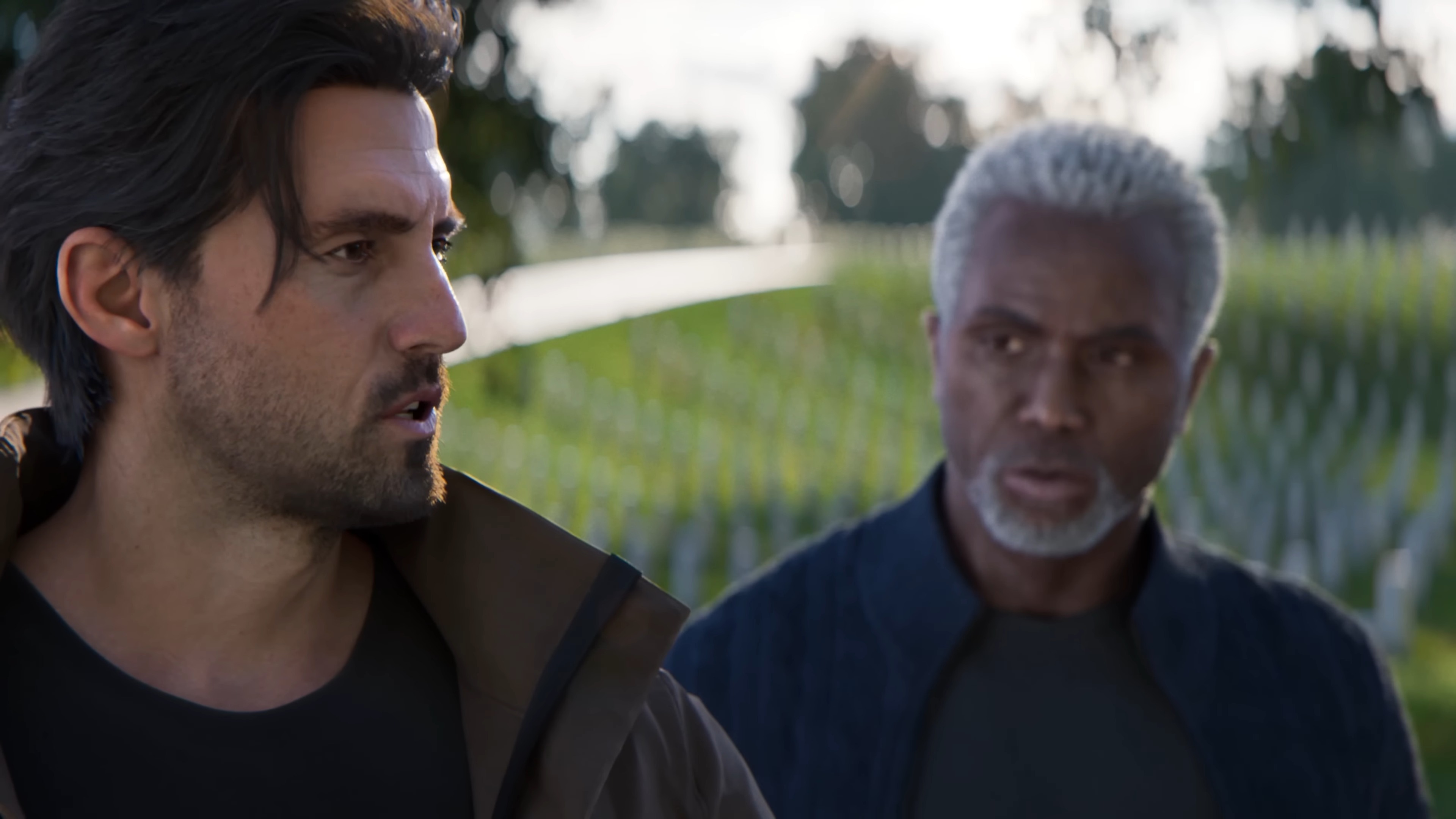
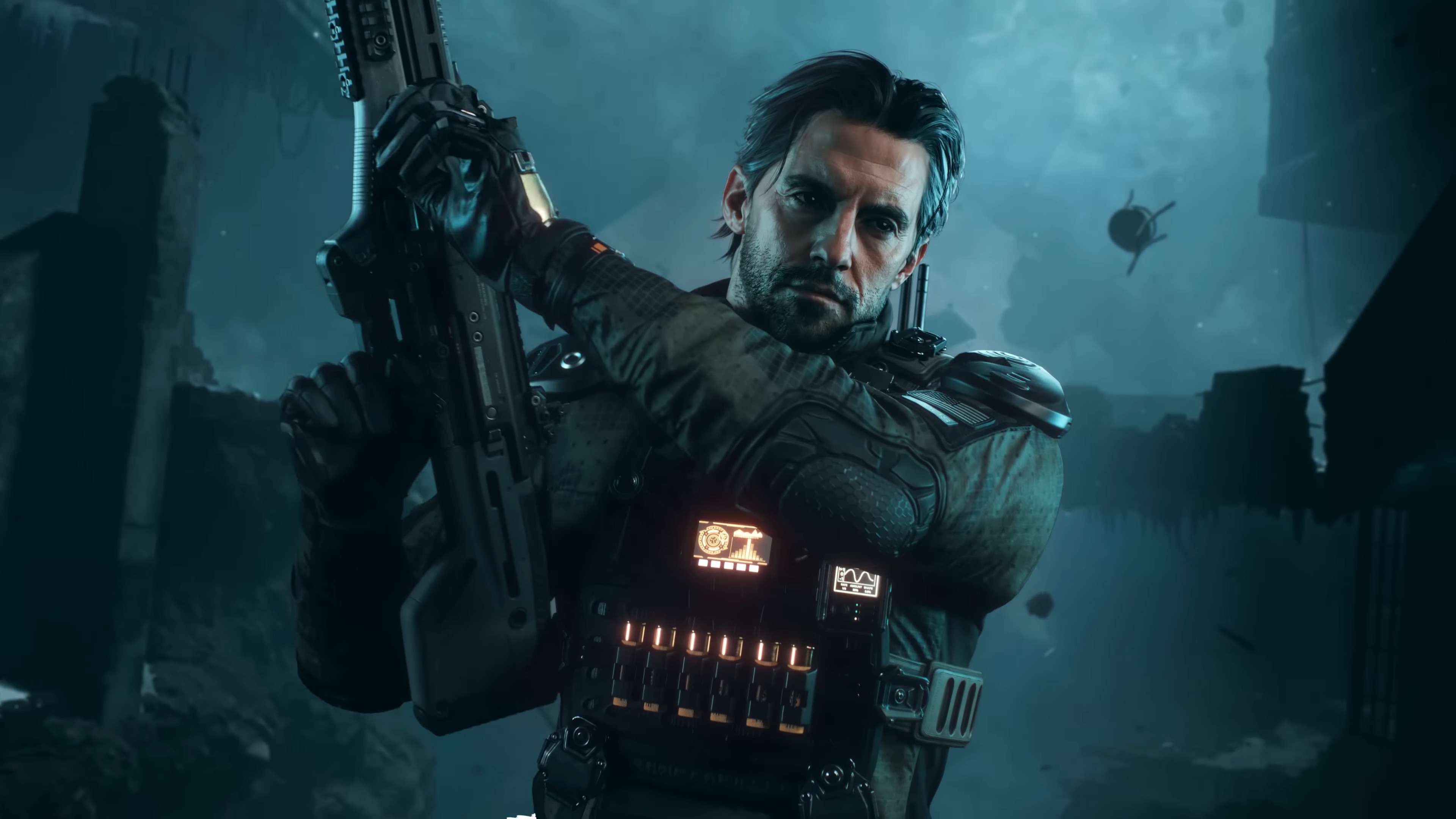
The latest addition to Multiplayer Black Ops 7, the Skirmish mode and Warzone integration, encapsulate the seven core aspects of gameplay. The Skirmish mode seems to reflect an attempt by the Black Ops team to stay ahead in the competition with Battlefield 6’s expansive map gameplay, by introducing a similar concept of their own.
In simpler terms, Skirmish is an updated version of battle modes from previous games, similar to Ground War. It features a large-scale map where two teams of 20 players each are formed by five squads of four. Instead of fast-paced combat, this mode focuses more on strategic gameplay, allowing players greater freedom to utilize tools like wing suits, grapple hooks, and boost jumps for more elaborate maneuvers.
This mode provides a more thoughtful approach to multiplayer compared to traditional modes, creating a more tactical and exploratory environment for the players.
The direction this game is heading sets it apart significantly from many past endeavors of ours. For us, it feels like a major scene shift.
Miles Leslie, associate creative director for Treyarch
The team wasn’t very forthcoming about the main Multiplayer aspect, but they did share that at the game’s release, there would be 16 maps available, and among these, three had been updated from Black Ops 2.
As a tech-savvy gamer, I regretfully inform you that we’re on the edge of our seats waiting for COD Next to unveil what’s in store for Call of Duty: Warzone when it merges with Black Ops 7 during Season 1, tentatively set for around early December.
Developing Black Ops 7
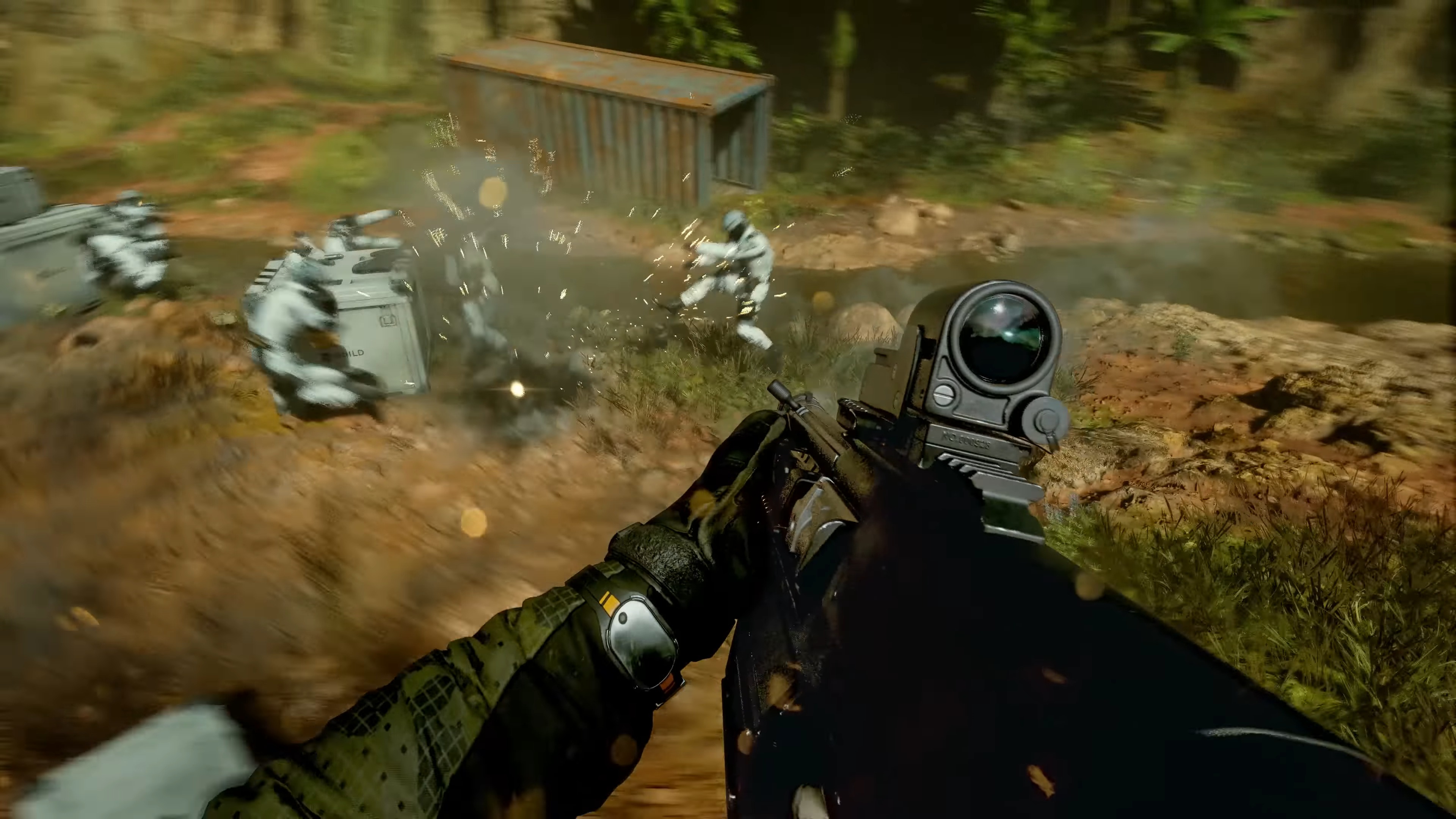
During a group interview, Yale Miller, the Production Director at Treyarch, shared that there’s a profound sense of passion in their studio while developing Black Ops. This passion, he explained, plays a significant role in creating outstanding video games by identifying what truly inspires the team.
As I listen in on their discussions about Black Ops, it’s evident that the team has a genuine enthusiasm for the franchise. It’s infectious, really-a member of the art team proudly showcasing the latest advancements in GPU particle effects leaves me grinning ear to ear. And hearing about how this graphical leap will enhance the game’s ominous new fog-enshrouded zombie maps? Chills down my spine!
Staying true to Black Ops while crafting something new
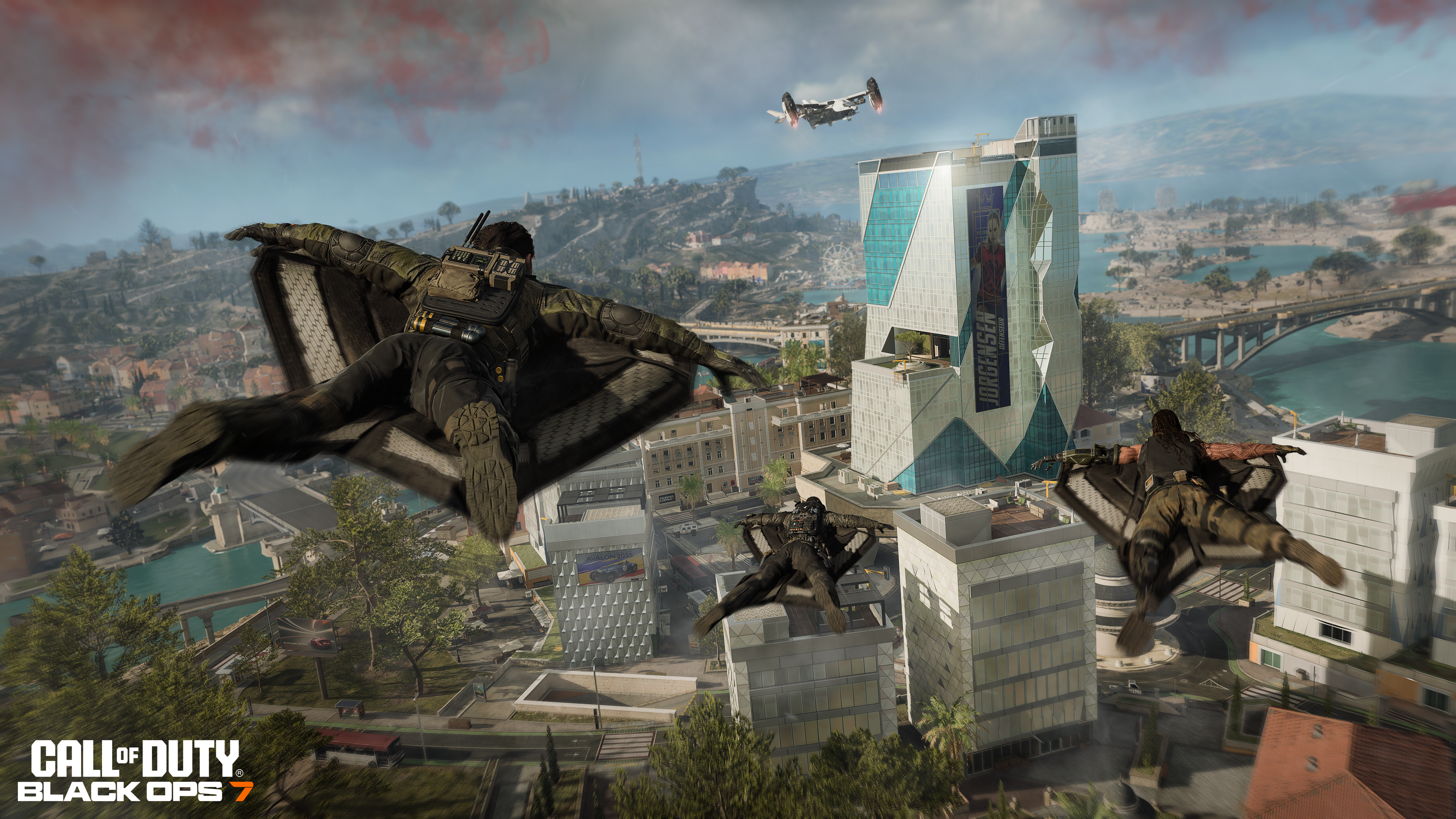
Every year, Call of Duty is often criticized for being essentially the same game repackaged, although there are differences among its various series. This critique becomes even more apparent when Activision and the studios responsible for the game release sequels simultaneously – a practice we’ve observed with Modern Warfare 2 and 3 in 2022 and 2023.
In simpler terms, people frequently complain that Call of Duty is just the same game reissued every year with minor adjustments. However, this criticism can become stronger when Activision and the studios associated with the game put out new versions one after another in quick succession, as demonstrated by Modern Warfare 2 and 3 being released in 2022 and 2023.
Critics often claim that the follow-up to the duo is just an “enlargement,” but these allegations have been largely disputed. The initial double sequel release in the Black Ops series sparked some whispers of similarity, yet these were mostly silenced by the unveiled teaser trailer, which demonstrated significant differences between Black Ops 7 and its predecessor rather swiftly.
According to Miles Leslie, the associate creative director at Treyarch, “We were truly releasing the team’s potential” because the direction we’re heading with this game is extremely distinct from what we’ve previously accomplished. It felt like a significant shift or transformation to us.
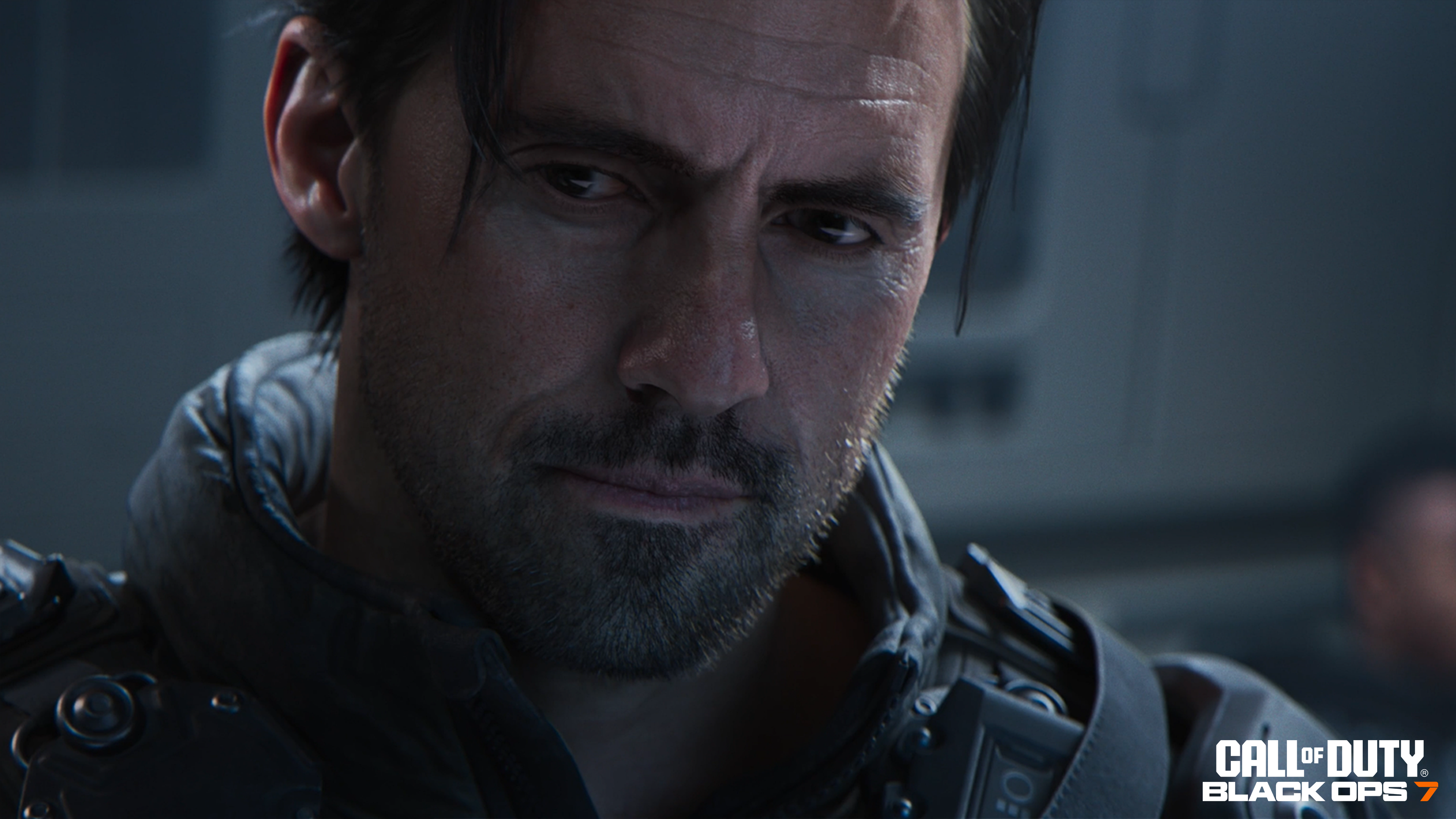
“We wanted to do something that was absolutely unique from Black Ops 6,” says Miller.
Call of Duty: Black Ops 2 offered a unique narrative structure with scenes set in two distinct time periods – the 1980s and 2025. This design allowed for an engaging storyline that could have easily been divided into separate games, yet remained consistent as a sequel in this series. In Black Ops 2, we experienced the opening acts of the campaign with characters Frank Woods and Alex Mason set in the 80s. Subsequently, in a futuristic rendition of the year 2025, players took on the role of Alex’s son, David “Section” Mason.
For Black Ops 6, Raven Software joined forces with Treyarch to delve more profoundly into Frank Woods’ exploits during the 90s. In Black Ops 7, the team expanded on the thread started in Black Ops 2 by focusing on David Mason’s narrative and crafting a forward-looking story set in a slightly futuristic era that offered them creative flexibility to introduce innovative technology and gameplay elements.
Miller inquires, “Where might we turn our focus now, given that we’ve explored both the past and the future?” They suggest, “Let’s initiate discussions about potential projects. Perhaps we should challenge conventional norms and venture into uncharted territories.

Miller often discusses, “What makes up the essence of Black Ops?” He often found himself returning to the year 2035. What fresh tales could we spin in that era? Everyone was excited about near-future settings because they offer opportunities to experiment with technology and accessories. It felt like, ‘This is getting very close to Black Ops 2!’ For us, it’s considered canonical.
Miller elaborates on how the team decided to establish a 10-year time difference between Black Ops 2 (set in 2025) and Black Ops 7 (set in 2035). He explains that this choice allowed them to create a fresh narrative while also dealing with the consequences of actions portrayed in earlier games.
Working simultaneously on Black Ops 6 and Black Ops 7 allowed our team to create two separate narratives with intricate connections. This approach enabled us to explore innovative concepts, materials, and experiences that wouldn’t have been feasible back in the early ’90s.
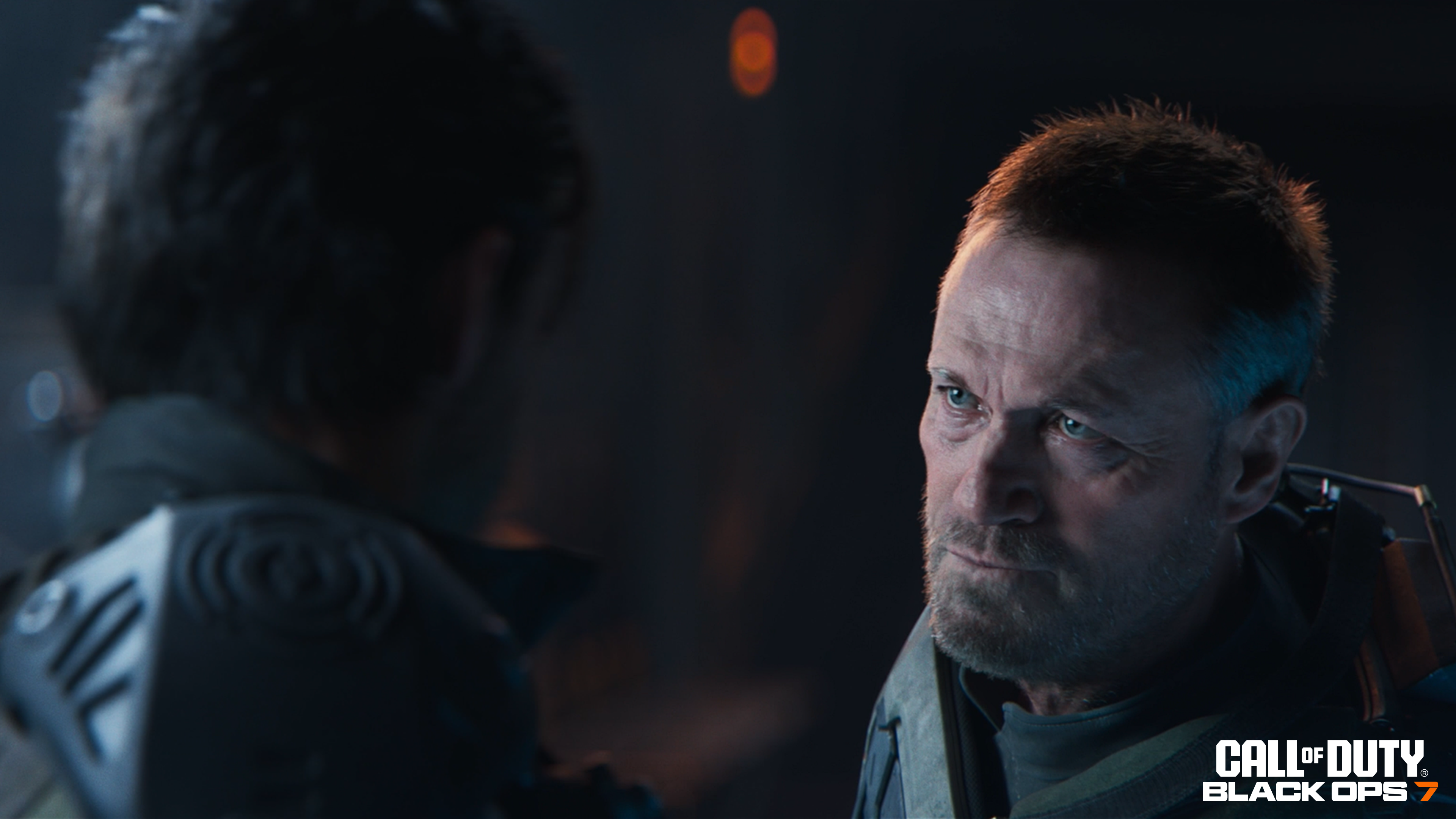
As Matt Scronce stated, both Black Ops 6 and Black Ops 7 were given the go-ahead concurrently. From the outset, it was clear that this dual venture would unfold in such a manner. With Black Ops 6, our team embarked on an unprecedented journey into a 90s game universe, followed immediately by diving headfirst, together with our partners, into the realm of the near future.
In simpler terms, Scronce is saying, “When considering gameplay elements, active camouflage might not have been feasible in Black Ops 6, don’t you think? While it’s possible that we could have devised a way to incorporate it given our Black Ops brand, it’s a very specific feature that we, narratively and fictitiously, chose not to include.

According to Scronce, working on Black Ops 7 allows for a lot of enjoyment because it provides the freedom to explore futuristic elements, stepping away from historical constraints, and thus enabling more creativity in technology design.
The future of Black Ops
Regarding Black Ops 7 moving timewardly, I found myself pondering if the Black Ops series might be approaching an end, but Miller swiftly dismissed such thoughts, stating, “It can’t signify our conclusion since we have deep affection for other games in our collection. For instance, isn’t Black Ops 3 considered canon? There are still aspects that remain unexplored.

Miller points out, “In the game’s narrative, Woods is no longer alive, as depicted in the Black Ops 7 trailer with his headstone. This makes certain scenes challenging for our characters, but we aren’t viewing it as an end. Instead, we’re considering it as a part of the ongoing story.
Regardless of going forward with Black Ops 4 and Black Ops 3, it seems we can’t create a new game because timelines are interconnected in such a way that alteration is impossible without cutting ties. However, we’re not developing a new game for now.

During our meeting, the team members from Treyarch and Raven discussed the seven fundamental aspects of Black Ops 7’s gameplay. These range from the innovative campaign endgame experience all the way to the cooperative mode of Dead Ops Arcade 4. However, it’s important to note that the Call of Duty series doesn’t halt its development with its initial release. Each game is supported with a year’s worth of additional content post-launch, which includes fresh maps and modes for multiplayer, new weapons and characters, and much more.
With seven unique gameplay modes to cater to, each offering its own exclusive unlockable content, there’s plenty of opportunity to flesh out the seasonal roadmap cards. However, planning and managing that content isn’t a walk in the park. As Treyarch’s design director, Matt Scronce, puts it, “In reality, it’s quite challenging to strike a balance among all the game modes.
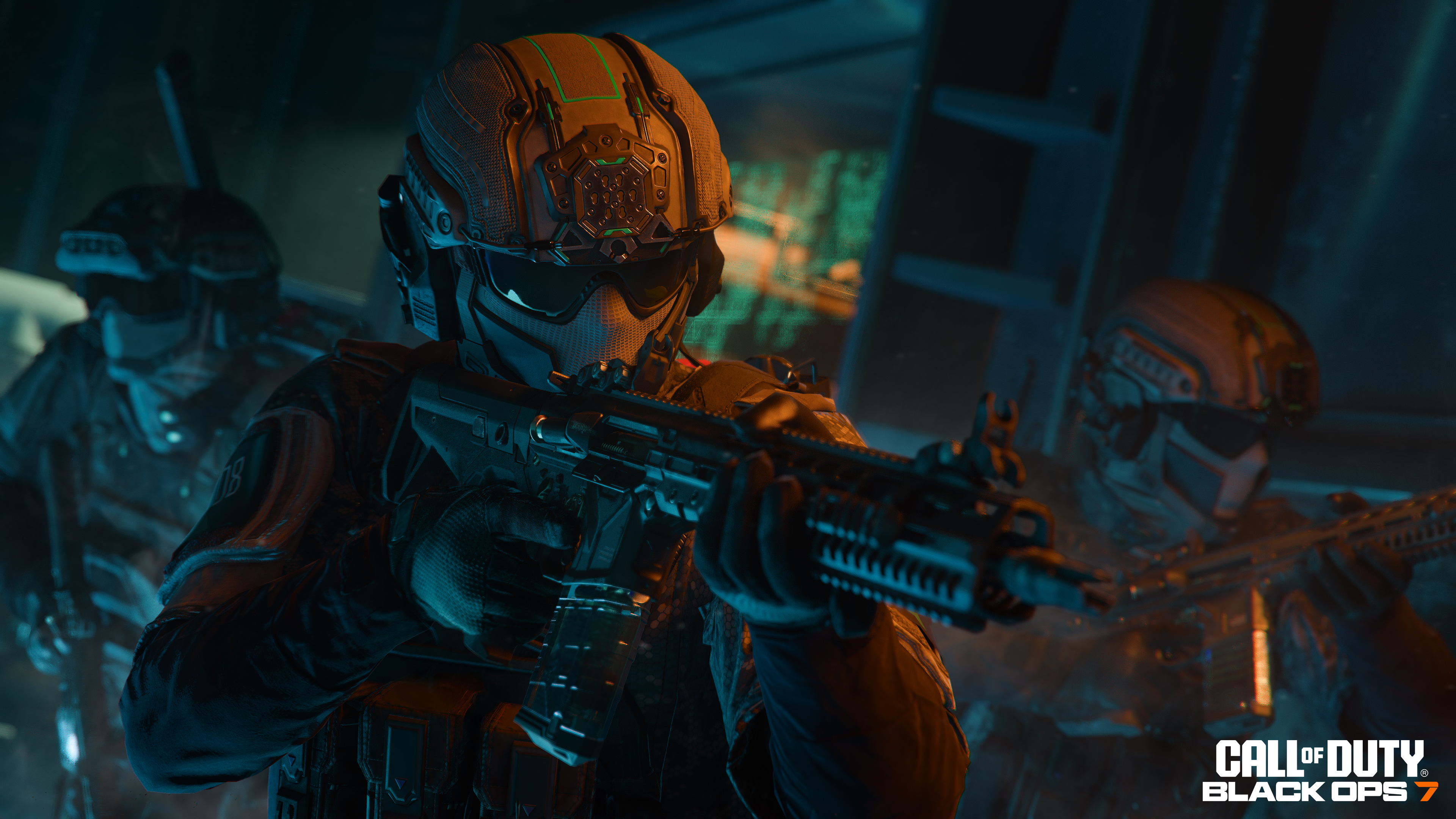
However, our team excels in system design and they’re immersed in analyzing spreadsheets for each mode, according to Scronce.”
This version maintains the original meaning while making it more natural and easier to read by using simpler language and restructuring the sentence slightly.
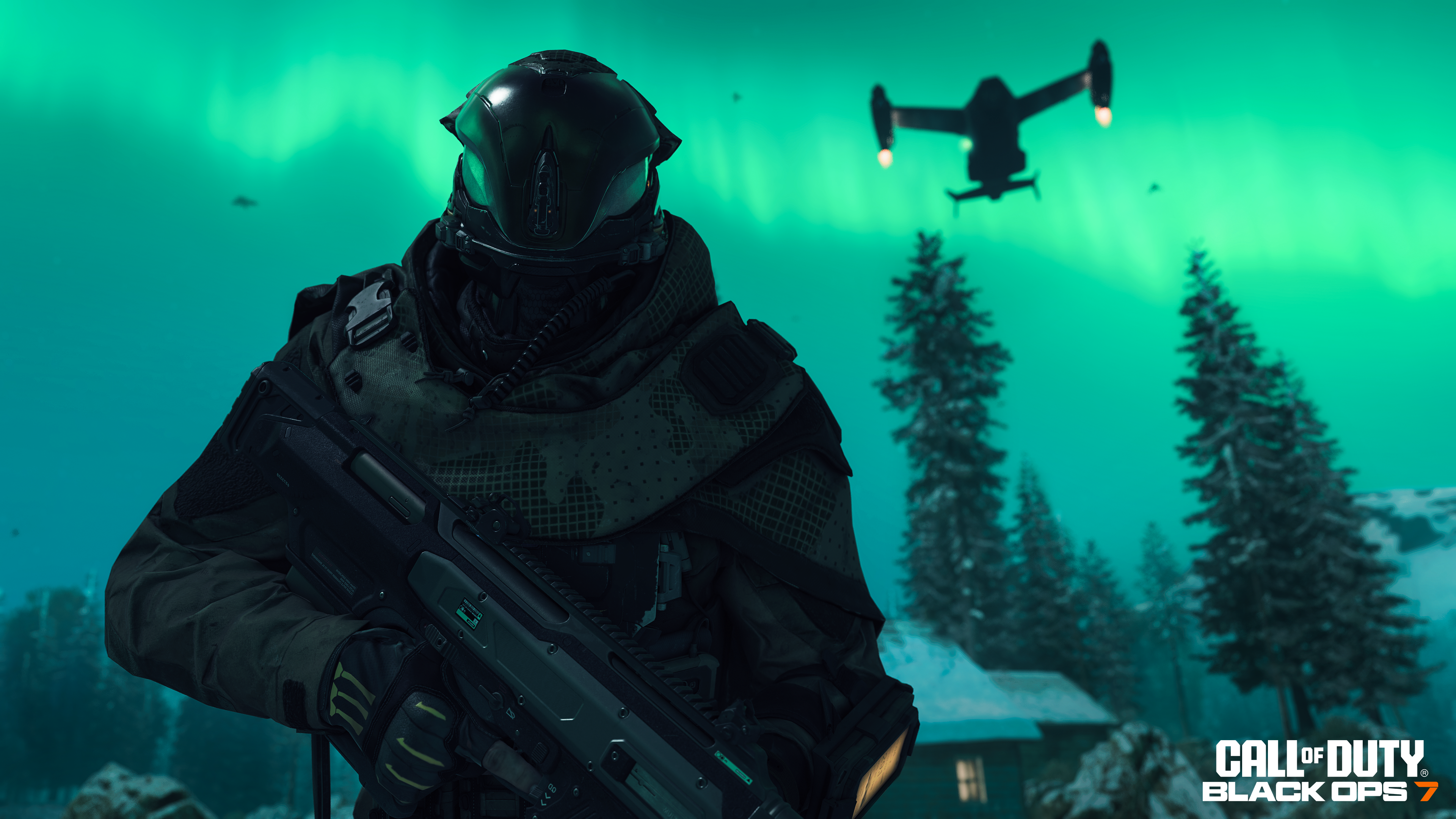
Regarding Black Ops 7’s seven main aspects, Scronce adds, “We were really thrilled when we conceptualized it, and it became apparent that you could enjoy the entire game solo or with companions. Whether you choose core multiplayer, skirmish, co-op campaign, Dead-ops, or Zombies, you’ll always be progressing towards a camo or battle pass, which is what makes it intriguing. You can focus on one mode, but there’s so much more to explore in the game.
Although cooperative play returns in Black Ops 7, it may not be a standard feature across all future Call of Duty games. As Miller explains, ‘the key phrase is ‘connected’ when discussing the gaming experience and what sets
We found it incredibly thrilling when we discovered that this game could be enjoyed not only with friends but also solo. In other words, it’s a game you can enjoy whether you have company or prefer to play on your own.
Matt Scronce, design director for Treyarch
Initially, the team considered restricting multiplayer cooperation in Black Ops 7 to just two players, as Miller explained, thinking it would be less challenging. However, he added, “But that approach wouldn’t allow you to lead your entire squad through the zombie mode!
When they opted to incorporate cooperative play into the campaign, the team felt there ought to be a camouflage track available across all game modes. In other words, since this is a linked game, players should gain advancement consistently.
As a passionate fan, I’ve got some exciting news to share! The development process led me to forge even more connections, in intriguing ways that might initially catch your eye but eventually make perfect sense within the context of Black Ops 7.
“Connected perks,” as Miller puts it, extend beyond just gameplay. For instance, you can actually witness what your squad is up to, a feature reminiscent of military operations where you’re always in the know about other players’ actions. Miller explains that the team took these real-world ideas and ingeniously incorporated them into the game systems for Black Ops 7, enhancing our gaming experience significantly!
Truly cooperative experience, but maybe a little surprise
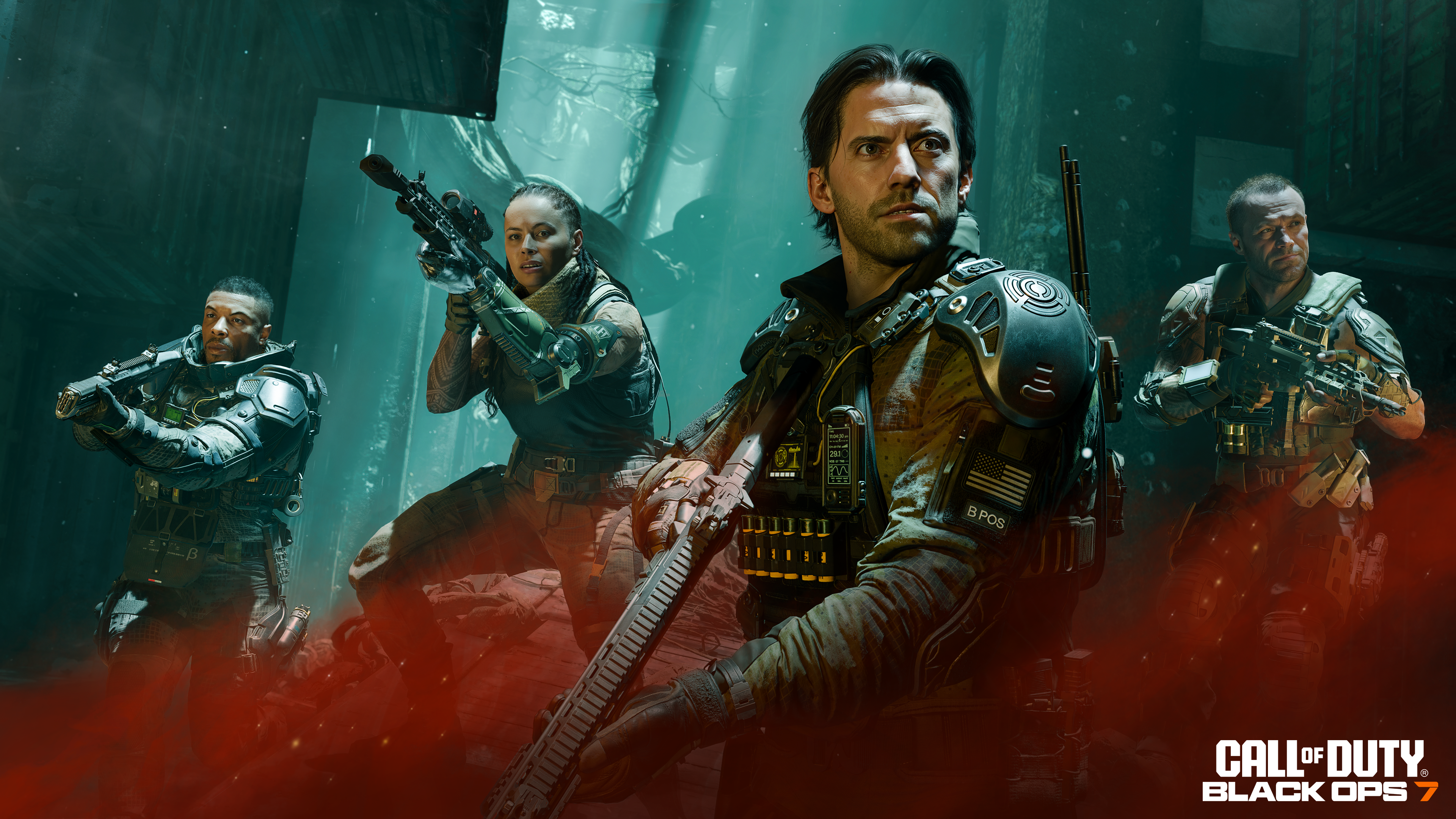
In our discussions about the game’s connectivity and shared cooperative experience, the topic of Black Ops 7’s latest addition to its seven core gameplay pillars arose. Known as ‘Player versus Environment’ (PvE), this new mode takes place in the world of Avalon and allows players to explore with wingsuits in groups of four, with up to 32 players per server. When asked about the mode being purely PvE, Miller chuckles and hints that there might be an unexpected twist.
Speaking as a passionate admirer, let me share some insights about the captivating realm of Avalon, a place teeming with diverse experiences and challenges. This magical world is divided into various levels of difficulty zones, ensuring that each region offers unique tasks suited to different players’ abilities. Venturing into tougher areas requires higher character levels; otherwise, you might face a harsh reality – total defeat!
Miller went on to explain that some tasks can be accomplished individually, while others are designed for group work. Some activities may even necessitate the collaboration of many players in order to progress effectively.

Although the layout of the new Avalon map and the cooperative play in Endgame seemed familiar, reminiscent of past experiences with DMZ and Modern Warzone Zombies, there’s a slight change. Unlike before, the server doesn’t stay active indefinitely; instead, it imposes a time limit on how long you and your team can explore Avalon together.
Although we didn’t have an opportunity to experience Avalon firsthand, the team’s descriptions make me imagine a fusion of classic modes like DMZ/MWZ and The Division’s former “Survival” mode.
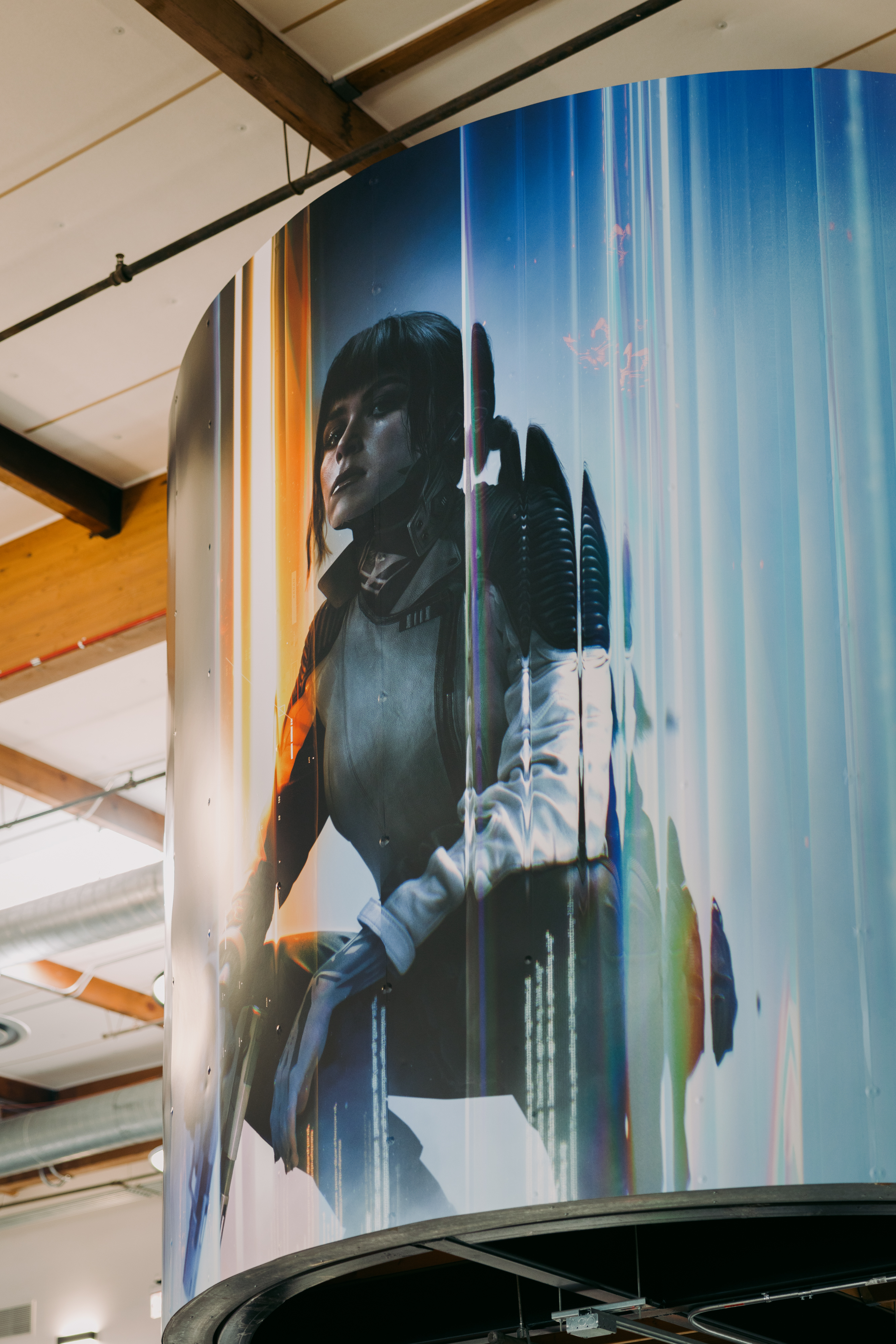
Not all fans of extensive experiences necessarily seek out cooperative ones; it’s in situations like these that Skirmish becomes an appealing option.
In my perspective, the latest 20 vs 20 mode isn’t entirely foreign; we’ve dabbled with something similar in Cold War, an experience we thoroughly enjoyed.
Over time, we’ve delved into land conflicts in different roles. Among these experiences, the 20v20 was arguably the most enjoyable. When it came to the crunch, I discussed finding a balance in our operations that wasn’t overly intense, yet still kept things interesting, avoiding monotony.
Miller mentions they’re still working out some details, but Scronce believes we’re currently in a strong position,” is one possible way to paraphrase the original statement in natural and easy-to-read language.
Miller suggested that instead of merely creating another Resurgence experience for Warzone, they aimed to make the plan distinctive and unique. This thought process led to considering various squad sizes. Regarding the inclusion of wingsuits, grapples, and armor, Scronce expressed his enthusiasm by saying, “That’s just fun!
We can’t reach an end with us as there’s so much affection left for our other games. For instance, isn’t Black Ops 3 a part of the lore? There are still unexplored aspects that we could delve into.
Yale Miller, director of production for Treyarch
Black Ops 7 is ambitious, but still somehow last-gen friendly

During their discussion about the interconnectedness of Call of Duty: Black Ops 7 and its growing foundations of gameplay, it appears that some of these innovative elements might not make it to the final version due to launch deadlines. This is reminiscent of what happened with Call of Duty: Black Ops 6, where the theater mode was absent from the last-gen console release at launch. It’s possible that not all of Black Ops 7’s seven key gameplay aspects will be available on PS4 and Xbox One.
According to Miller, last-gen versions of the game won’t have extra features, but all essential experiences will be present. He emphasizes that they add visual enhancements such as icing and hot sauce to make it look amazing on PS4, Xbox One, and less powerful PCs, ensuring even those with lower-end PCs can still play the game.
Our goal for theater is to support it, but I don’t know where that will end.
Yale Miller, director of production for Treyarch
The upcoming minor update to our mini spec will be announced soon, bringing a few changes. However, the core gameplay remains unaltered, allowing for cooperative play among all players. Expect reduced particle effects and less reflection, similar to Forge where light is bounced off surfaces.
Miller further mentions that although no specific features are being removed at this time, the decision regarding the inclusion and maintenance of the Theater mode remains under discussion. “We aim to provide support for the Theater mode, but its future development is uncertain.
Players with advanced systems such as current-gen consoles and high-performance PCs can anticipate experiencing even more of the ‘extra flavors’ mentioned earlier. This includes advanced techniques like full ray tracing and path tracing, as well as enhancing aspects like particle density and antialiasing.
Generative AI imagery and Black Ops
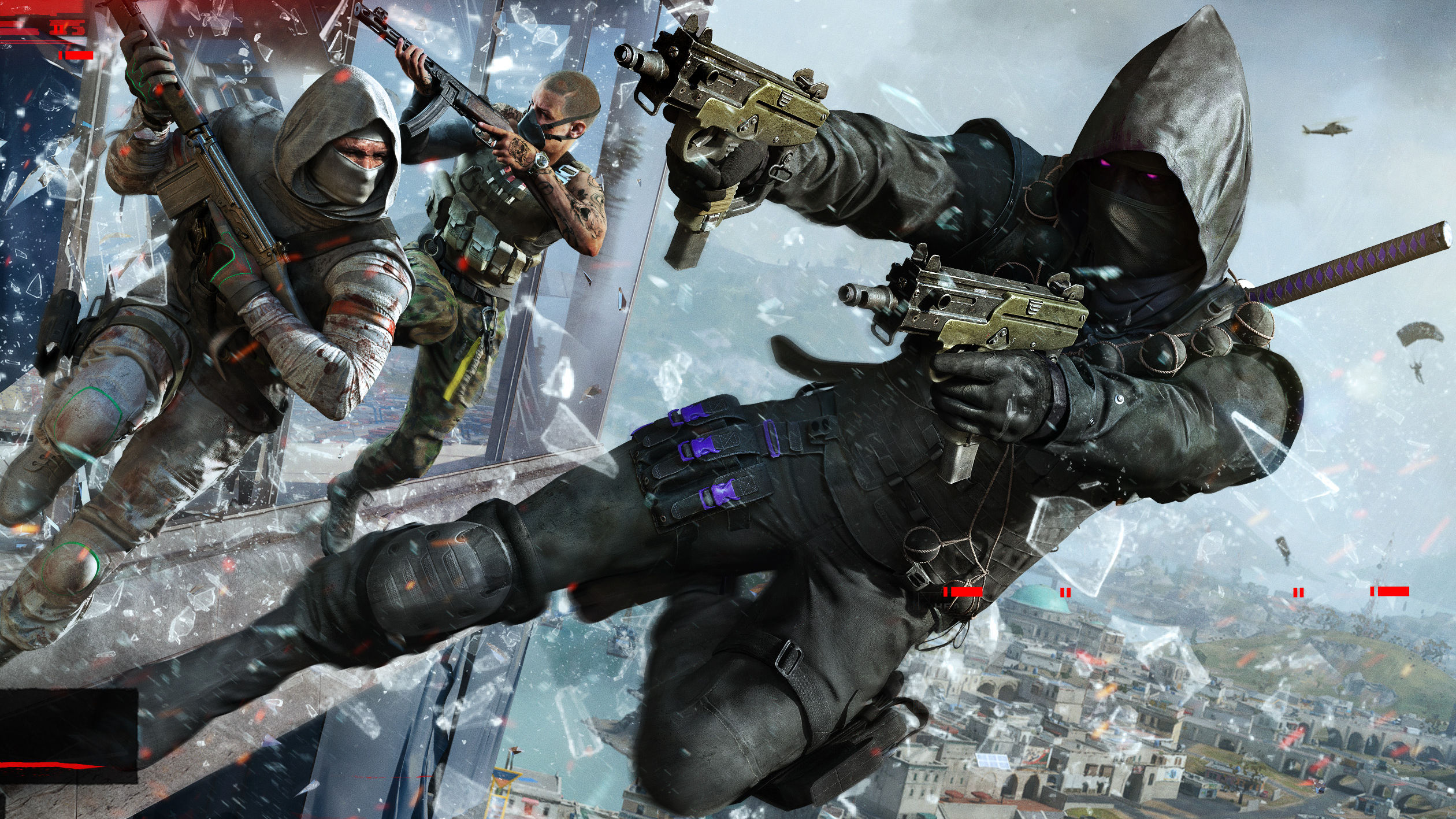
During our chat about the game’s artistic aspects, it seemed fitting to broach the subject of generative AI’s future in Black Ops with Scronce and Miller. Given that Black Ops 6 faced a lot of criticism for integrating generative AI into its event rewards and bundles, and as a result, Activision had to disclose their reliance on this emerging technology due to Steam’s policy on game AI disclosure.
Miller promptly clarifies that “Everything we have comes into contact with human hands” in response to our conversation about generative AI. He skillfully avoids the subject, yet his gestures hint at a reluctance to delve deeper into this particular topic.

Miller emphasizes again that while teams explore various aspects and applications of AI, everything visible right now has a human touch.
He further notes that AI is considered as a tool that we’re all still learning to master. In his opinion, everyone within the industry is currently exploring the best ways to utilize and approach its application.
It appears that Call of Duty: Black Ops 7 might not reveal its use of generative AI on Steam, but it’s clear that the development team has tried to learn from their past errors and move forward more cautiously in this regard.
In natural and easy-to-read language:
Call of Duty: Black Ops 7 is being created by Treyarch and Raven Software and will be released by Activision. The game is scheduled to debut on Xbox and PlayStation consoles, as well as PC via Steam, Battle.net, and the Xbox app on PC, on November 14. On its release day, it will also be available in the libraries of Xbox Game Pass Ultimate and PC Game Pass.
Read More
- Ashes of Creation Rogue Guide for Beginners
- ARC Raiders – All NEW Quest Locations & How to Complete Them in Cold Snap
- Best Controller Settings for ARC Raiders
- Where Winds Meet: How To Defeat Shadow Puppeteer (Boss Guide)
- Ashes of Creation Mage Guide for Beginners
- Where Winds Meet: Best Weapon Combinations
- Bitcoin’s Wild Ride: Yen’s Surprise Twist 🌪️💰
- Fishing Guide in Where Winds Meet
- Berserk Writer Discuss New Manga Inspired by Brutal Series
- Netflix’s One Piece Season 2 Will Likely Follow the First Season’s Most Controversial Plot
2025-08-24 18:13